Steel Nomad is a new benchmarking tool that pushes GPUs to their limits, especially entry-level and midrange graphics AIBs. It features cutting-edge technologies like procedural grass and volumetric skies and runs at 4K resolution. The benchmark is set in a futuristic desert spaceport and follows a humanoid bot protagonist, providing a visually stunning test for GPUs. Steel Nomad is a welcome addition to the benchmarking suite from Underwriters Laboratories (UL), offering a modern update to the 2016 Time Spy UL benchmark.

What do we think? Steel Nomad is a welcome addition to our benchmarking suite. Time Spy, UL’s other top non-ray-traced benchmark was launched in 2016, hence an update utilizing new rendering technologies and methods was in order. In addition to giving the graphics AIBs a thorough test, the benchmark itself is beautiful to watch.
Move over, Time Spy, there’s a new non-ray-traced benchmark in town
At JPR, we compared the performance of multiple graphics AIBs using UL’s new Steel Nomadbenchmark.
UL’s Steel Nomad is set in a futuristic, gritty desert spaceport where we follow our humanoid bot protagonist through the sun-scorched city. The desert setting provides dust, vast skies full of clouds, along with holograms and detailed architecture—everything a benchmark needs to put the GPUs to the test.
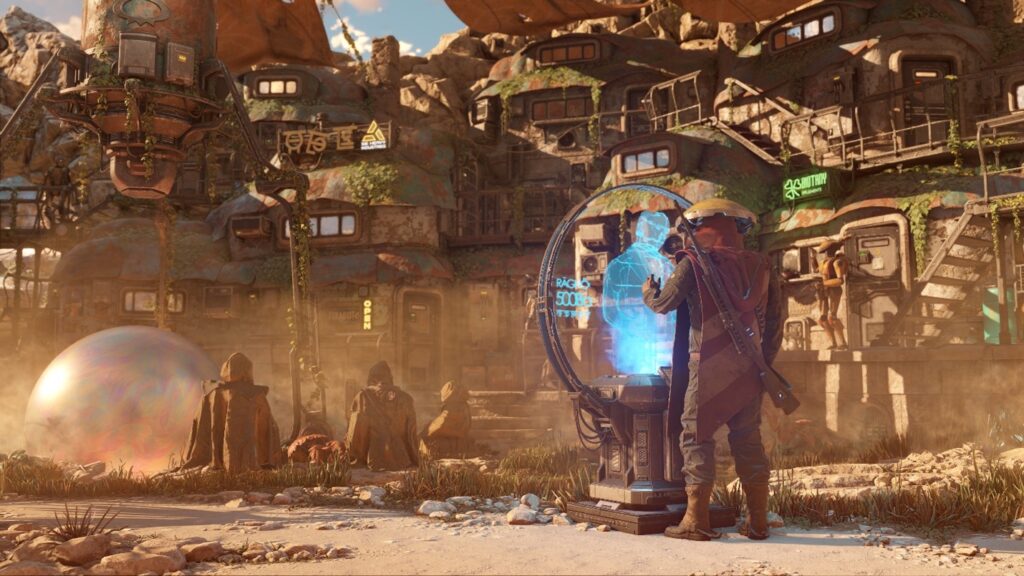
In order to demonstrate how the new benchmark and its stressors relate to the previous generation, we tested nine graphics AIBs over various segments against Steel Nomad and its predecessor, Time Spy Extreme.
Test Bed:
- CPU: 3.00 gigahertz Intel 13th Gen Core i9-13900K
- MB: ASUSTeK COMPUTER INC. TUF GAMING Z790-PLUS
- Samsung SSD 960 PRO 512GB [Hard drive] (512.11 GB)
- RAM: 32MB Corsair Vengeance
- OS: Windows 11 Pro – 10.0.22621 Build: 22621
- RAM: DDR 4 3600
- Display: LG 27UD69P 4K
Steel Nomad includes the option of DirectX 12 and Vulkan, which we tested using both APIs.
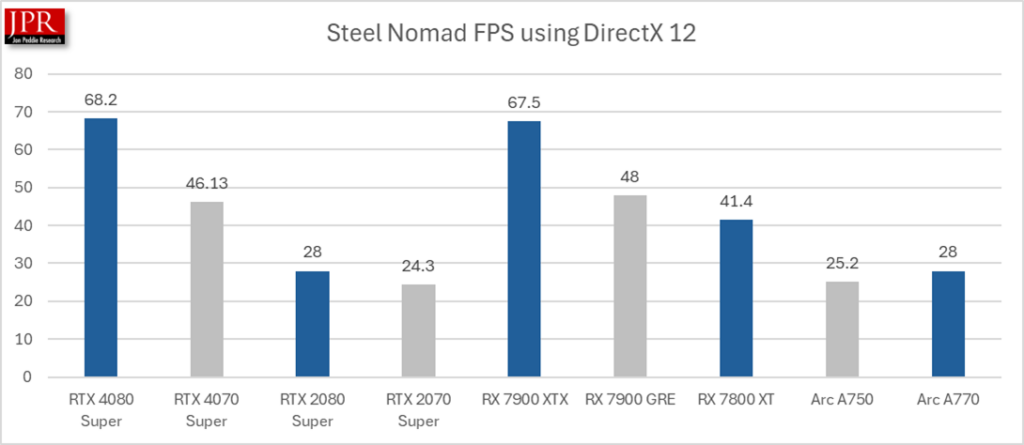
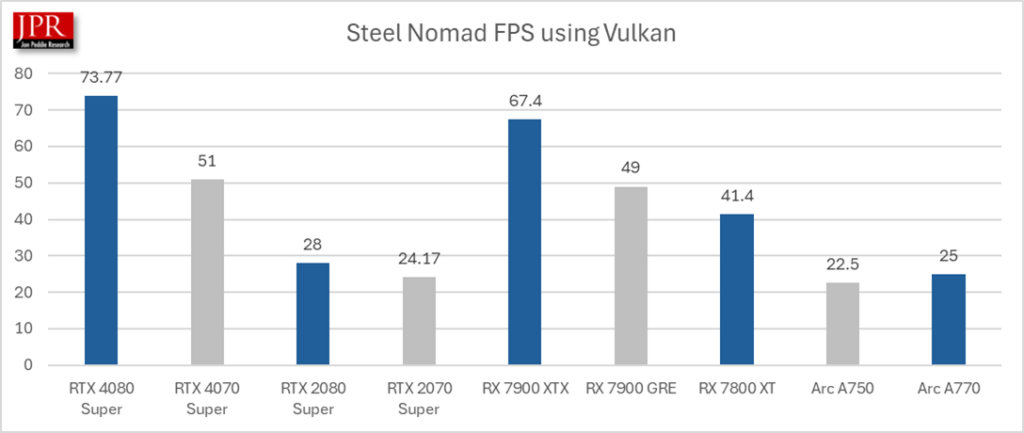
Nvidia graphics AIBs performed marginally better when using the Vulkan API, while AMD’s AIBs remained even on both APIs. Intel Arc AIBs had slightly better performance when running on DirectX 12.
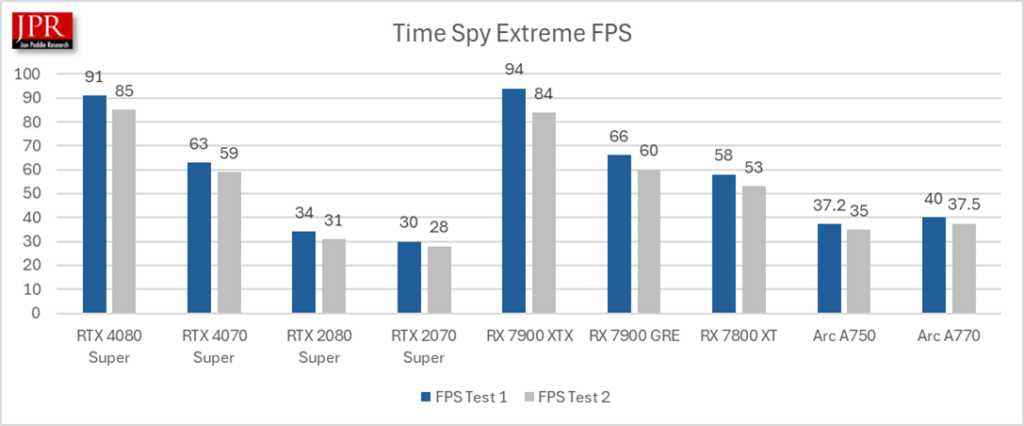
When running Time Spy Extreme, all of the graphics AIBs showed significantly higher frame rates, which is to be expected considering that the test is about to enter its eighth year of use.
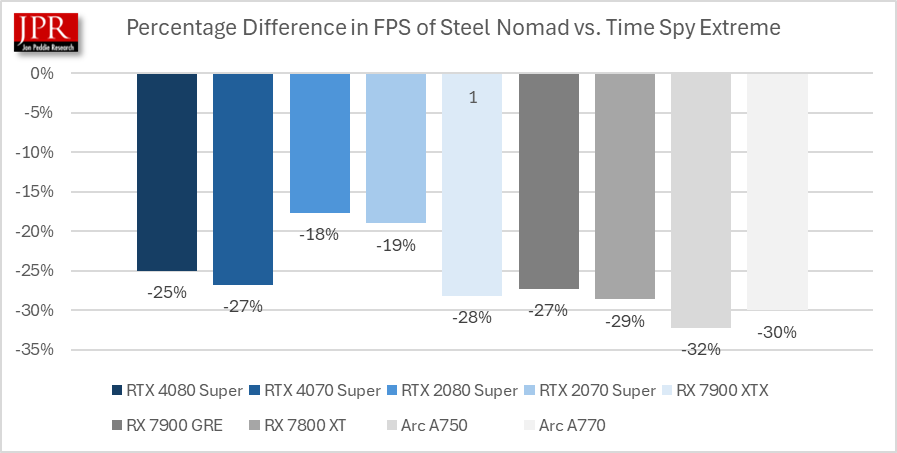
When comparing Steel Nomad to Time Spy Extreme, the average frame rate of the graphics add-in boards was -25% lower on the new test. UL’s goal of developing a brand-new, non-ray-traced benchmark that will tax contemporary GPUs has been successful.
Along with Steel Nomad, UL introduced Steel Nomad Light, which is a cross-platform benchmark for lightweight PCs.
UL’s goal of developing a brand-new, non-ray-traced benchmark that will tax contemporary GPUs has been successful.
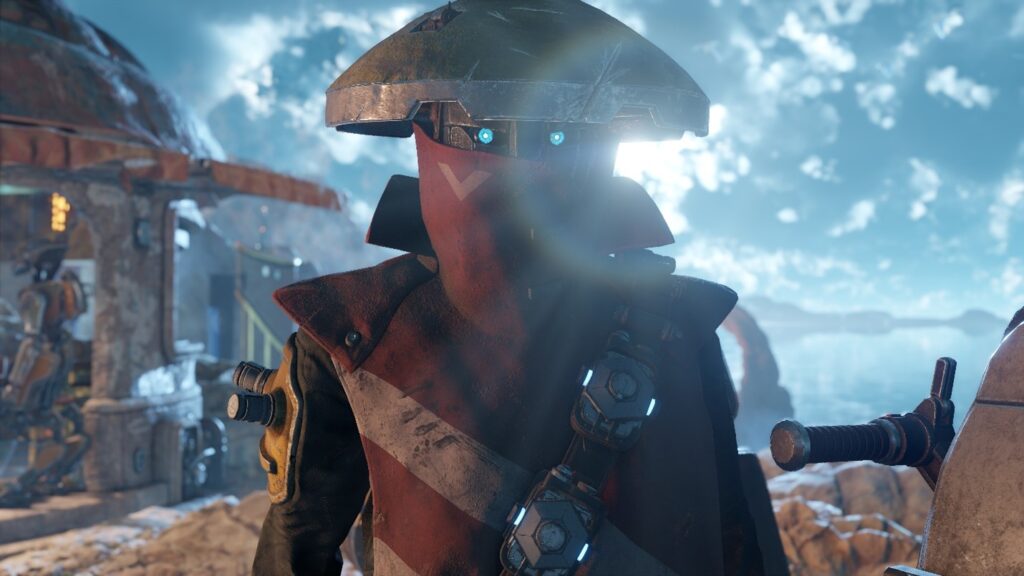
Using cutting-edge advancements like procedural grass and volumetric skies, along with established technologies like ambient occlusion, depth of field, and volume illumination, Steel Nomad puts a lot of stress on GPUs, particularly those AIBs in the entry-level and midrange segments. Steel Nomad runs at 4K resolution.
Steel Nomad Light reduces the resolution to 1440p and eliminates or lessens the most complex graphical techniques found in the program, making it more suitable for devices that are lightweight and portable.